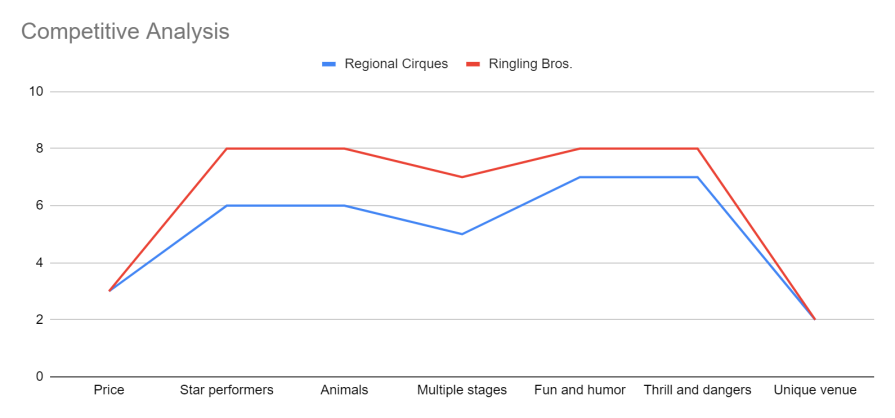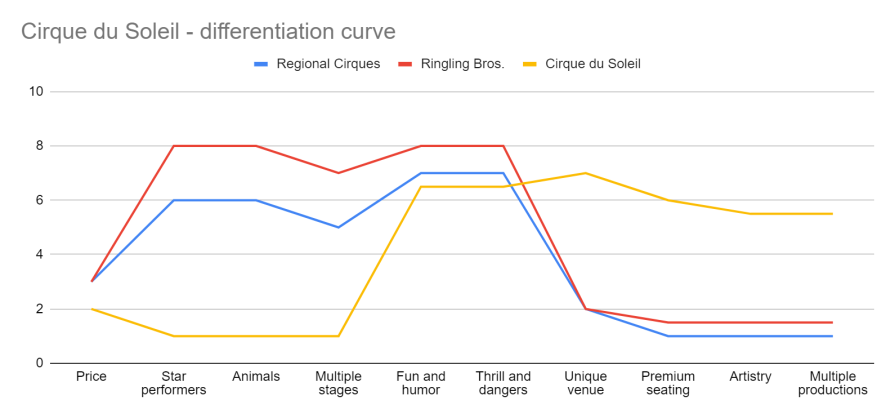Differentiation has become increasingly important in the product development world.

With thousands of new products entering the market, you simply have no other choice if you want your product to stand out to consumers.
Just think about it. How many to-do-list style products are there? Or calendar solutions? Or calorie-tracking apps? Without a solid differentiation plan, breaking through the noise is impossible.
In this article, you’ll learn about the key differentiators, how to set your product apart from the rest of the market, and how many differentiators you should have.
In simple terms, a differentiator is something that you offer that your competitors don’t.
It’s often referred to under terms such as a “unique selling proposition” or “competitive edge.”
Ultimately, a differentiator answers the question of why customers would use your product over competitive solutions.
For a differentiator to work effectively it needs to be unique, defensible, focused on customer needs, and sustainable.
First and foremost, the differentiator needs to be unique.
It doesn’t necessarily mean you must innovate cutting-edge technology, although that’s one way.
You can differentiate on common factors, such as price (e.g., targeting middle segments, whereas competitors focus either on premium or mass segments) or personalization (doubling down on the needs of a specific market segment that is underserved by competitive solutions).
For differentiators to work, they must be centered on customer needs.
While using cutting-edge backend technology and the newest frameworks might differentiate you from competitors, it’s something your employees might care about, but most customers won’t see the difference.
The actual question isn’t “how do you differ,” but rather, “how do you differ in the eyes of customers.”
The long-term sustainability of your differentiators is the key to success.
Although offering penetration pricing and charging $10 for value that your competitors charge $300 might indeed be a powerful differentiator, its success will be short-lived if your business model can’t sustain such a pricing model.
Short-term differentiators are, in reality, just marketing gigs.
Although it’s hard to create “uncopyable” solutions, your differentiators can’t be too easy to copy.
Returning to the price example, say your main competitor sells their offering for $100 and you charge $95. Apart from the fact that a 5 percent difference is likely not a strong differentiator, it’s also easy to copy if needed.
On the other hand, Ikea undercuts most competitors by 50 percent plus, not only due to the pricing model but the whole business model, including outsourced production, self-assembly, and massive showrooms double-serving as warehouses. Trying to copy Ikea’s key differentiator would require adjusting numerous areas of the business.
Now that you know why differentiators are important (they are, in reality, your way of surviving on the market) and what good differentiators look like, let’s discuss how to actually create them. There are three primary steps in discovering differentiators.
The first step is understanding what market segments you plan to win. If you’re building a new product and haven’t defined it yet, go back to planning your go-to-market entry.
Do focused user interviews with the target segment to understand how they make a buying decision and what they consider when doing so. Follow-up with some questions: what do they value or miss most in the current market offering (both yours and competitive ones).
Let’s consider Cirque du Soleil, a unique entertainment event.
It was competing in the entertainment area and its main target group was wanna-be circus visitors, so it did thorough research in the segment and discovered that the most important factors for its audience were:
This gave Cirque du Soleil direction as to what lenses it should evaluate the market and competition through.
The next step was to identify competitive solutions in the market. Back then, there were two main options in the live entertainment sector. You could either visit industry giant Ringling Bros., or a regional circus.
Let’s map how these two players compare in all listed factors. The default approach would be to evaluate each factor on a scale of one to ten and visualize it on a line chart:

This representation clearly shows how each player performs in areas important for the target segment.
As you see, there’s not much differentiation between these two solutions. Ringling Bros. seems to be an industry winner mainly due to its higher quality in all categories.
Knowing what the market looks like, the next step for Cirque du Soleil was to plan its differentiation game.
There are four main levers one can pull when it comes to differentiating:
Now, let’s take a look at how Cirque du Soleil took this on.
Creating
Eliminating
Reducing

These changes helped Cirque du Soleil visibly differentiate from other market offerings and create a brand-new, unique selling proposition.
Don’t fall into the trap of providing as many differentiators as possible.
Look back at the example of Cirque du Soleil. It had to forfeit factors such as star performers, animals, and multiple stages to truly differentiate with a unique venue, premium seating, artistry, and multiple productions.
Otherwise, not only would it create an offering for everyone that’s in practice an offering for no one, but it also would’ve had a hard time sustaining all these factors in the long term.
Ultimately, it’s better to truly nail and master three differentiators than to barely outperform the competition in twenty areas.
Of course, as your product grows and you saturate your initial market segments, you’ll need to expand to new segments with different needs and expectations, but it doesn’t mean you can just keep adding things to your core offering.
As you expand, you might need to create sub-offers for different segments (for example, different subscription plans with a few unique differentiators for each) or maybe even a new set of products.
Every year, it becomes easier to create a new product. This results in market saturation in almost every product category. Just try searching for a habit tracker app, and you’ll easily count a hundred of them.
As a result, product differentiation has become an increasingly critical factor for product success. For long-term, sustainable success, you need a customer-focused, unique, and defensible differentiation from the crowd.
Identify the factors most important for your target segment, evaluate competitive solutions, and look for ways to innovate. Don’t become too complacent with your differentiation strategy. Given the speed of technological development, a defensible differentiator today is a market standard tomorrow. Your differentiation strategy should be a long-term, continuous process, not just a thing you do once.
Featured image source: IconScout

LogRocket identifies friction points in the user experience so you can make informed decisions about product and design changes that must happen to hit your goals.
With LogRocket, you can understand the scope of the issues affecting your product and prioritize the changes that need to be made. LogRocket simplifies workflows by allowing Engineering, Product, UX, and Design teams to work from the same data as you, eliminating any confusion about what needs to be done.
Get your teams on the same page — try LogRocket today.

Most teams fail at autonomy. Learn how clear rules help product teams move faster without micromanagement.

A practical framework for PMs to use AI in ideation without sacrificing judgment, strategy, or decision quality.

A practical five minute revenue estimation method to help product managers compare ideas, drop low impact features, and prioritize smarter.

A practical guide for PMs who want to stop being bottlenecks, delegate smarter, and lead teams effectively with a clear ownership framework.